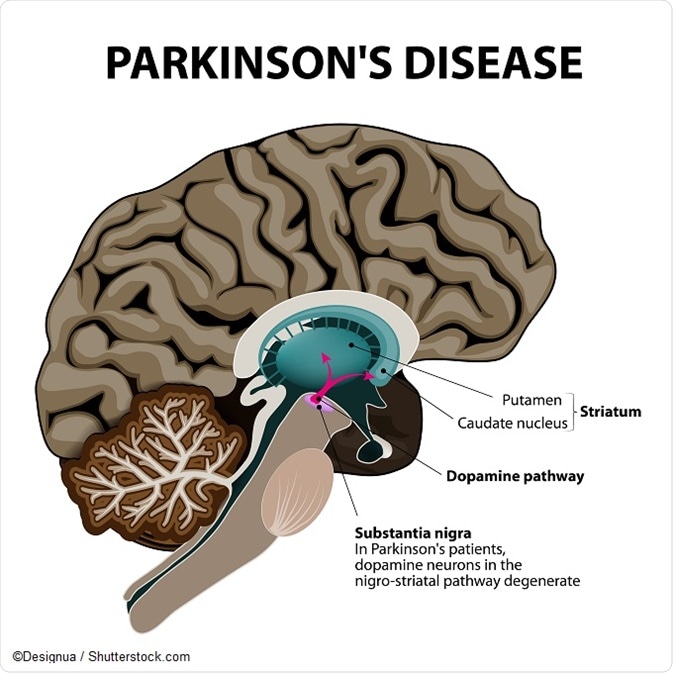Site Under Development, Content Population and SEO, Soft Launch 1st January 2020
Parkinson’s disease is primarily associated with the gradual loss of cells in the substantia nigra of the brain. This area is responsible for the production of dopamine. Dopamine is a chemical messenger that transmits signals between two regions of the brain to coordinate activity. For example, it connects the substantia nigra and the corpus striatum to regulate muscle activity.

If there is deficiency of dopamine in the striatum the nerve cells in this region “fire” out of control. This leaves the individual unable to direct or control movements. This leads to the initial symptoms of Parkinson’s disease. As the disease progresses, other areas of the brain and nervous system degenerate as well causing a more profound movement disorder.
The exact cause for the loss of cells is unknown. Possible causes include both genetic and environmental factors.
Certain genes have been found that may be associated with Parkinson’s disease. At least 15-20% of Parkinson’s disease patients have a close relative who has parkinsonian symptoms. There may be more than one genetic factor in causation of Parkinson’s disease. In addition genetic factors may be combined with environmental factors as well.
Parkinson’s is seen at an early age in individuals with mutations in genes for parkin, PINK1, LRRK2, DJ-1, and glucocerebrosidase, among others. So far at least nine genetic mutations have been identified as increasing a person’s risk of developing Parkinson’s disease.
The National Human Genome Research Institute (NHGRI) and the National Institute of Neurological Disorders and Stroke (NINDS) pinpointed a gene on chromosome 4 called the alpha synculein gene that is associated with Parkinson’s in some families. This mutated or changed gene however, may account for only a small proportion of the total number of Parkinson’s disease cases but is associated with a significant proportion of familial Parkinson’s disease with an onset before the age of 60.
Alpha-synculein is the main component of Lewy bodies, which are found in cells of all patients with Parkinson's disease. In patients with a mutated gene for alpha synculein an altered protein product is formed. This protein accumulates in the cell and attracts other proteins in order to form a deposit which leads to the damage of the neuron.
These are unstable molecules produced during normal chemical reactions in the body. When they interact with other molecules they have the ability to damage tissues like neurons.
With age there is a normal decline of the dopamine producing neurons, which leads to the premature loss of dopamine.
Several toxins like illegal drugs contaminated with a chemical called MPTP may cause severe Parkinson-like symptoms. It was found that once MPTP crossed into the brain it started killing brain cells.
Possible toxins could include pesticides and herbicides used in farming, toxins released by industrial plants and air pollution related to road traffic.
Other toxins and exposures associated with Parkinson’s disease include:
They also include the insecticides permethrin and beta-hexachlorocyclohexane (beta-HCH), the herbicides paraquat and 2,4-dichlorophenoxyacetic acid and the fungicide maneb.
In 2009, the US Department of Veterans Affairs added Parkinson’s to a list of diseases possibly associated with exposure to the Agent Orange.